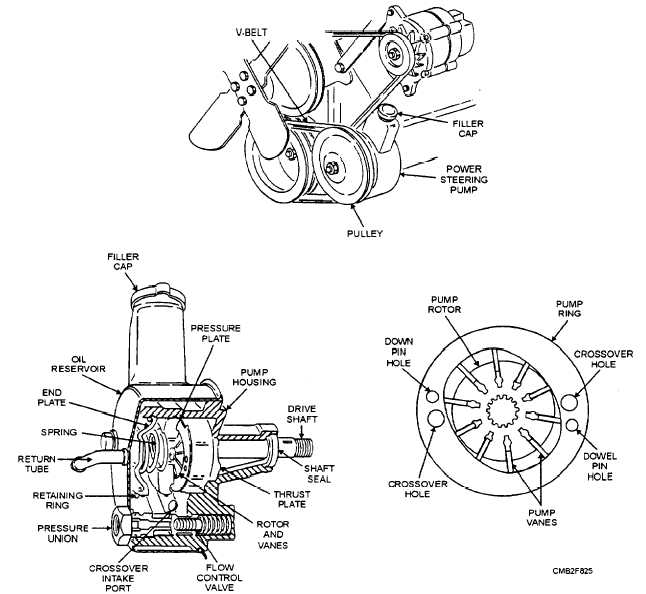POWER STEERING SYSTEMS
Power steering systems normally use an engine-driven pump and hydraulic system to assist steering action. Pressure from the oil pump is used to operate a piston and cylinder assembly. When the control valve routes oil pressure into one end of the piston, the piston slides in its cylinders. Piston movement can then be used to help move the steering system components and front wheels of the vehicles.
The components that are common to all power steering systems are as follows:
POWER STEERING PUMP (fig. 8-25) - The power steering pump is engine-driven and supplies hydraulic fluid under pressure to the other components in the system. There are four basic types of power steering pumps - vane, roller, slipper, and gear types. A belt running from the engine crankshaft pulley normally powers the pump. During pump operation, the drive belt turns the pump shaft and pumping elements. Oil is pulled into one side of the pump by vacuum. The oil is then trapped and squeezed into a smaller area inside the pump. This action pressurizes the oil at the output, as it flows to the rest of the system. A pressure relief/flow valve is built into the pump to control maximum oil pressure. This action prevents system damage by limiting pressure developed throughout the different engine speeds.
CONTROL VALVE (fig. 8-26) - The control valve (rotary or spool type), which is actuated by steering wheel movements, is designed to direct the

Figure 8-25. - Typical power steering pump.
Continue Reading